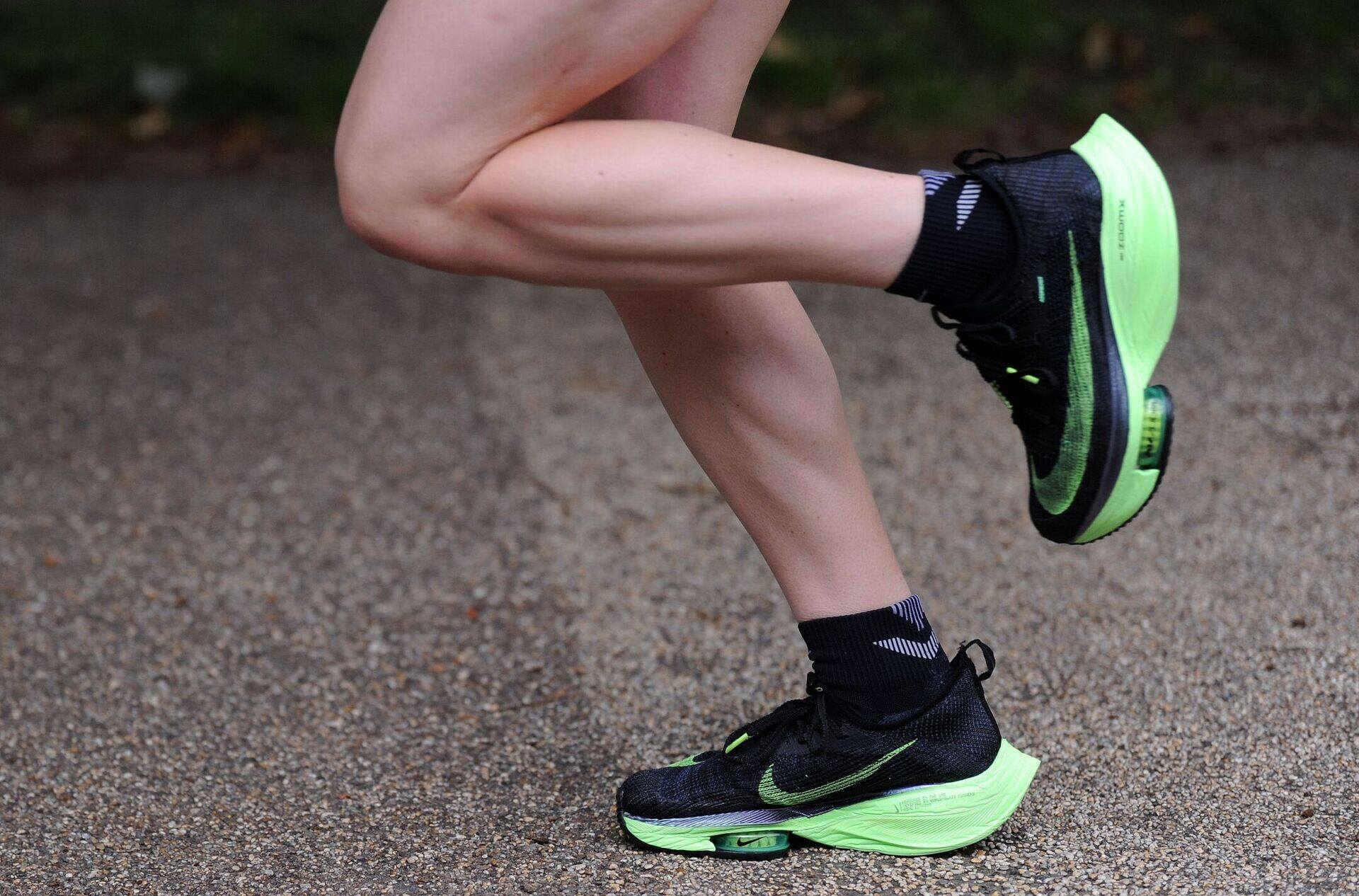Home>Health & Nutrition>Injury Prevention>A Comprehensive Guide To Piriformis Syndrome: Everything You Should Know


Injury Prevention
A Comprehensive Guide To Piriformis Syndrome: Everything You Should Know
Published: February 25, 2024
Learn how to prevent piriformis syndrome and avoid injury with our comprehensive guide. Find everything you need to know about injury prevention and piriformis syndrome.
(Many of the links in this article redirect to a specific reviewed product. Your purchase of these products through affiliate links helps to generate commission for Therunningadvisor.com, at no extra cost. Learn more)
Table of Contents
- Understanding Piriformis Syndrome
- Causes of Piriformis Syndrome
- Symptoms of Piriformis Syndrome
- Diagnosing Piriformis Syndrome
- Treatment Options for Piriformis Syndrome
- Exercises and Stretches for Piriformis Syndrome
- Prevention and Management of Piriformis Syndrome
- When to Seek Medical Attention for Piriformis Syndrome
Understanding Piriformis Syndrome
Piriformis syndrome is a condition characterized by the compression or irritation of the sciatic nerve by the piriformis muscle. The piriformis muscle is located in the buttocks, and it plays a crucial role in the movement of the hip joint. When this muscle becomes tight or inflamed, it can lead to compression of the nearby sciatic nerve, resulting in pain, tingling, and numbness in the buttocks and down the leg.
The piriformis muscle is essential for stabilizing the hip joint and aiding in the rotation of the thigh. However, when it becomes overused or strained, it can lead to the development of piriformis syndrome. This condition is often associated with activities that involve repetitive motion of the hip joint, such as running, cycling, or sitting for prolonged periods.
Understanding the anatomy of the piriformis muscle and its relationship to the sciatic nerve is crucial in comprehending the underlying mechanisms of piriformis syndrome. The sciatic nerve is the longest nerve in the body, running from the lower back down through the buttocks and into the legs. When the piriformis muscle becomes tight or inflamed, it can exert pressure on the sciatic nerve, leading to the characteristic symptoms of piriformis syndrome.
Moreover, the proximity of the piriformis muscle to the sciatic nerve makes it susceptible to compression or irritation, especially when the muscle undergoes excessive strain or trauma. This can result in the development of piriformis syndrome, causing discomfort and mobility issues for affected individuals.
In summary, piriformis syndrome is a condition characterized by the compression or irritation of the sciatic nerve by the piriformis muscle, leading to pain, tingling, and numbness in the buttocks and down the leg. Understanding the intricate relationship between the piriformis muscle and the sciatic nerve is essential in recognizing the underlying causes and symptoms of this syndrome.
Causes of Piriformis Syndrome
Piriformis syndrome can arise from various factors, all of which contribute to the compression or irritation of the sciatic nerve by the piriformis muscle. Understanding the underlying causes of this condition is crucial in developing effective prevention and treatment strategies. Here are the primary causes of piriformis syndrome:
-
Muscle Tightness and Imbalance: Prolonged sitting, repetitive activities such as running or cycling, and inadequate stretching can lead to tightness and imbalance in the piriformis muscle. When the muscle becomes tight, it can exert pressure on the sciatic nerve, triggering the symptoms of piriformis syndrome.
-
Trauma or Injury: Direct trauma to the buttocks or hip region, such as a fall or impact during sports activities, can result in injury to the piriformis muscle. This can lead to inflammation and swelling, causing compression of the sciatic nerve and the onset of piriformis syndrome.
-
Anatomical Variations: Some individuals may have anatomical variations in the piriformis muscle or the path of the sciatic nerve, predisposing them to a higher risk of developing piriformis syndrome. These variations can increase the likelihood of nerve compression and associated symptoms.
-
Overuse and Repetitive Motion: Engaging in activities that involve repetitive motion of the hip joint, such as long-distance running or cycling, can strain the piriformis muscle. Overuse and repetitive motion can lead to muscle fatigue and tightness, contributing to the development of piriformis syndrome.
-
Poor Biomechanics: Incorrect posture, gait abnormalities, or improper body mechanics during physical activities can place excessive stress on the piriformis muscle, leading to muscle imbalances and increased pressure on the sciatic nerve. Poor biomechanics can contribute to the development of piriformis syndrome over time.
Understanding these causes is essential in identifying risk factors and implementing preventive measures to reduce the likelihood of developing piriformis syndrome. By addressing these underlying factors, individuals can take proactive steps to maintain the health and function of the piriformis muscle, minimizing the risk of nerve compression and associated discomfort.
Symptoms of Piriformis Syndrome
The symptoms of piriformis syndrome typically manifest as pain, tingling, and numbness in the buttocks and down the leg, often mimicking the presentation of sciatica. Individuals affected by piriformis syndrome may experience a range of discomfort and mobility issues, which can significantly impact their daily activities and quality of life.
The hallmark symptom of piriformis syndrome is pain in the buttocks that may radiate down the back of the leg, following the path of the sciatic nerve. This pain can vary in intensity, from a dull ache to sharp, shooting sensations, and may worsen during activities that engage the piriformis muscle, such as walking, climbing stairs, or sitting for extended periods.
In addition to pain, individuals with piriformis syndrome may also experience tingling and numbness in the buttocks and along the back of the leg. This sensation, known as paresthesia, can be accompanied by a feeling of pins and needles or a loss of sensation in the affected area. These sensory disturbances are often attributed to the compression of the sciatic nerve by the inflamed or tight piriformis muscle.
Furthermore, piriformis syndrome can lead to muscle tightness and tenderness in the buttocks, contributing to discomfort and reduced flexibility in the hip joint. The affected area may feel tender to the touch, and individuals may notice increased stiffness and difficulty in performing activities that involve hip movement, such as bending or rotating the leg.
Moreover, the symptoms of piriformis syndrome can be exacerbated by prolonged sitting or standing, as well as activities that place pressure on the piriformis muscle. Individuals may experience increased pain and discomfort when engaging in these activities, further limiting their mobility and overall comfort.
It is important to note that the symptoms of piriformis syndrome can vary from person to person, and the severity of the condition may fluctuate over time. Some individuals may experience intermittent discomfort, while others may endure persistent symptoms that significantly impact their daily routines.
Recognizing these symptoms is crucial in seeking appropriate medical attention and implementing targeted interventions to alleviate discomfort and improve the function of the piriformis muscle. By understanding the diverse manifestations of piriformis syndrome, individuals can take proactive steps to address their symptoms and enhance their overall well-being.
Diagnosing Piriformis Syndrome
Diagnosing piriformis syndrome can be challenging due to the overlapping symptoms with other conditions, such as sciatica and lumbar spine disorders. However, healthcare professionals employ a comprehensive approach to accurately identify and differentiate piriformis syndrome from other potential causes of buttock and leg pain. The diagnostic process typically involves a combination of medical history assessment, physical examination, and imaging studies to establish a definitive diagnosis.
During the initial evaluation, the healthcare provider will conduct a thorough review of the individual's medical history, including a detailed inquiry into the onset and progression of symptoms, previous injuries, and relevant lifestyle factors. This information helps in understanding the context of the individual's discomfort and identifying potential risk factors associated with piriformis syndrome.
Subsequently, a comprehensive physical examination is performed to assess the individual's range of motion, muscle strength, and neurological function. Specialized maneuvers, such as the Freiberg test and Pace test, may be utilized to elicit specific symptoms associated with piriformis syndrome, aiding in the identification of nerve compression and muscle dysfunction.
In addition to the physical examination, imaging studies, such as magnetic resonance imaging (MRI) or ultrasound, may be employed to visualize the piriformis muscle and the surrounding structures. These imaging modalities can provide valuable insights into the anatomical integrity of the piriformis muscle, the position of the sciatic nerve, and the presence of any structural abnormalities or inflammation.
Furthermore, electromyography (EMG) and nerve conduction studies (NCS) may be utilized to assess the electrical activity and conduction of the sciatic nerve, helping to confirm the presence of nerve compression and dysfunction associated with piriformis syndrome.
The culmination of these diagnostic approaches enables healthcare professionals to establish a precise diagnosis of piriformis syndrome, ruling out other potential causes of buttock and leg pain. By integrating medical history assessment, physical examination, and advanced imaging studies, healthcare providers can formulate targeted treatment plans and interventions tailored to the individual's specific needs, ultimately promoting effective management and relief from the symptoms of piriformis syndrome.
Treatment Options for Piriformis Syndrome
The management of piriformis syndrome encompasses a multifaceted approach aimed at alleviating pain, reducing inflammation, restoring muscle function, and enhancing overall mobility. Several treatment options are available to address the symptoms and underlying causes of piriformis syndrome, offering individuals a comprehensive framework for recovery and improved quality of life.
1. Conservative Measures:
-
Rest and Activity Modification: Temporary modification of activities that exacerbate symptoms, such as prolonged sitting or engaging in high-impact exercises, can provide relief and prevent further aggravation of the piriformis muscle.
-
Physical Therapy: Targeted exercises and stretches prescribed by a physical therapist can help improve flexibility, strengthen the surrounding muscles, and alleviate tension in the piriformis muscle.
-
Heat and Ice Therapy: Alternating between heat and ice applications can help reduce inflammation and alleviate discomfort in the affected area.
2. Medications:
-
Nonsteroidal Anti-Inflammatory Drugs (NSAIDs): Over-the-counter or prescription NSAIDs can help alleviate pain and reduce inflammation associated with piriformis syndrome.
-
Muscle Relaxants: In some cases, muscle relaxants may be prescribed to alleviate muscle spasms and promote relaxation of the piriformis muscle.
3. Injection Therapies:
-
Steroid Injections: Corticosteroid injections administered directly into the piriformis muscle can provide targeted relief from inflammation and pain, offering a more localized approach to symptom management.
-
Botox Injections: Botulinum toxin injections, commonly known as Botox, can be utilized to relax the piriformis muscle and alleviate muscle spasms, contributing to pain reduction and improved mobility.
4. Manual Therapies:
-
Massage Therapy: Targeted massage techniques can help release tension in the piriformis muscle, improve circulation, and promote relaxation, contributing to symptom relief and enhanced muscle function.
-
Chiropractic Care: Spinal adjustments and manual manipulations performed by a chiropractor can help address biomechanical imbalances and alleviate pressure on the sciatic nerve, offering comprehensive relief from piriformis syndrome symptoms.
Read more: The Lion Diet: Everything You Need To Know
5. Surgical Intervention:
- Piriformis Release Surgery: In rare cases where conservative measures and non-invasive interventions do not provide adequate relief, surgical release of the piriformis muscle may be considered to alleviate nerve compression and restore optimal function.
By integrating these diverse treatment options, individuals with piriformis syndrome can access a tailored approach to address their symptoms and promote long-term recovery. Each modality offers unique benefits in addressing the underlying causes of piriformis syndrome, ultimately empowering individuals to regain comfort, mobility, and overall well-being.
Exercises and Stretches for Piriformis Syndrome
Engaging in targeted exercises and stretches is a fundamental aspect of managing piriformis syndrome, as it helps alleviate muscle tightness, improve flexibility, and strengthen the surrounding musculature. By incorporating specific movements and stretches into a comprehensive exercise regimen, individuals can effectively address the underlying causes of piriformis syndrome and promote enhanced mobility and comfort.
1. Piriformis Stretch:
The piriformis stretch is a cornerstone exercise for individuals with piriformis syndrome. To perform this stretch, individuals can lie on their back, bend the affected leg, and place the ankle of the affected leg over the opposite knee. Gently pulling the unaffected leg towards the chest while pushing the affected knee away can effectively stretch the piriformis muscle, providing relief from tightness and discomfort.
2. Seated Hip Stretch:
Seated hip stretches target the piriformis muscle and surrounding hip muscles, promoting improved flexibility and reduced tension. Individuals can perform this stretch by sitting on the edge of a chair, crossing the affected leg over the opposite knee, and gently leaning forward to feel a stretch in the buttocks and outer hip region. Holding this position for a few seconds and repeating on both sides can help alleviate muscle tightness and enhance range of motion.
Read more: All You Need To Know About IT Band Syndrome
3. Supine Piriformis Stretch:
The supine piriformis stretch involves lying on the back, bending both knees, and placing the affected ankle over the opposite knee. By gently pulling the unaffected leg towards the chest, individuals can experience a deep stretch in the piriformis muscle, contributing to improved flexibility and reduced discomfort in the buttocks and hip region.
4. Hip Flexor Stretch:
Stretching the hip flexors can complement piriformis-specific stretches by addressing overall hip mobility and reducing muscle imbalances. Individuals can perform a hip flexor stretch by assuming a lunge position, with the affected leg positioned behind and the front knee bent at a 90-degree angle. Gently leaning forward while maintaining an upright torso can effectively stretch the hip flexors, promoting enhanced mobility and reducing strain on the piriformis muscle.
5. Clamshell Exercise:
The clamshell exercise targets the hip abductors and external rotators, including the piriformis muscle. Individuals can perform this exercise by lying on their side with knees bent, and lifting the top knee while keeping the feet together. This movement engages the piriformis muscle and surrounding hip muscles, promoting strength and stability in the hip joint.
By incorporating these exercises and stretches into a regular routine, individuals with piriformis syndrome can effectively address muscle tightness, improve flexibility, and promote overall comfort and mobility. It is essential to perform these movements under the guidance of a healthcare professional or a qualified fitness instructor to ensure proper form and technique, ultimately maximizing the benefits of these targeted exercises and stretches.
Prevention and Management of Piriformis Syndrome
Preventing and effectively managing piriformis syndrome is essential for individuals seeking to maintain optimal musculoskeletal health and mobility. By implementing proactive measures and adopting targeted strategies, individuals can minimize the risk of developing piriformis syndrome and mitigate the impact of existing symptoms. Here are key approaches to prevention and management:
-
Proper Warm-Up and Stretching: Engaging in a thorough warm-up routine before physical activity and incorporating targeted stretches for the hip and gluteal muscles can help prevent muscle tightness and imbalances that contribute to piriformis syndrome. Dynamic movements and specific stretches can enhance flexibility and reduce the likelihood of muscle strain and tension.
-
Posture and Body Mechanics: Maintaining proper posture and body mechanics during daily activities and exercise is crucial for reducing undue stress on the piriformis muscle and the surrounding structures. Individuals can benefit from ergonomic assessments and posture correction techniques to minimize the risk of developing piriformis syndrome due to poor biomechanics.
-
Strength and Conditioning: Implementing a comprehensive strength and conditioning program that targets the hip, gluteal, and core muscles can enhance overall musculoskeletal function and stability. Strengthening these muscle groups can contribute to improved biomechanics and reduced strain on the piriformis muscle, thereby lowering the risk of developing piriformis syndrome.
-
Activity Modification: Individuals engaged in activities that involve repetitive motion of the hip joint, such as running or cycling, can benefit from modifying their training regimens to include adequate rest periods and cross-training activities. Varying the types of physical activities can reduce the risk of overuse injuries and muscle fatigue associated with piriformis syndrome.
-
Regular Physical Assessments: Periodic physical assessments by healthcare professionals, including physical therapists and sports medicine specialists, can help identify early signs of muscle imbalances, weakness, or tightness that may predispose individuals to piriformis syndrome. These assessments can inform targeted interventions to address potential risk factors and promote musculoskeletal health.
-
Conservative Management: For individuals already experiencing symptoms of piriformis syndrome, conservative management strategies, including physical therapy, targeted exercises, and modalities such as heat and ice therapy, can effectively alleviate discomfort and promote muscle relaxation. These non-invasive approaches can contribute to improved function and mobility.
-
Lifestyle Modifications: Incorporating lifestyle modifications, such as ergonomic adjustments in the workplace, regular movement breaks during prolonged sitting, and maintaining a healthy weight, can reduce the likelihood of exacerbating symptoms associated with piriformis syndrome. These modifications support overall musculoskeletal health and minimize the impact of predisposing factors.
By integrating these preventive measures and management strategies, individuals can proactively address the underlying causes of piriformis syndrome and promote long-term musculoskeletal well-being. Emphasizing a holistic approach to prevention and management empowers individuals to take charge of their musculoskeletal health and minimize the impact of piriformis syndrome on their daily activities and overall quality of life.
Read more: Understanding And Managing Patellofemoral Pain Syndrome: A Comprehensive Guide For Runners
When to Seek Medical Attention for Piriformis Syndrome
Seeking medical attention for piriformis syndrome is crucial when individuals experience persistent or worsening symptoms that significantly impact their daily activities and quality of life. While mild discomfort or occasional muscle tightness may resolve with self-care measures, certain indicators warrant prompt evaluation by healthcare professionals to ensure appropriate diagnosis and targeted interventions.
Persistent Pain and Discomfort: Individuals experiencing persistent or escalating pain in the buttocks, hips, or down the leg, particularly when accompanied by tingling, numbness, or muscle weakness, should seek medical attention. Persistent discomfort that interferes with daily activities, such as walking, sitting, or standing, may indicate underlying nerve compression or muscle dysfunction requiring professional assessment.
Impact on Mobility and Function: When piriformis syndrome symptoms impede normal mobility and functional capabilities, individuals should consult healthcare providers for comprehensive evaluation. Difficulty in performing routine movements, such as climbing stairs, bending, or engaging in physical activities, signifies the need for tailored interventions to address the underlying causes of impaired mobility.
Unresponsive to Self-Care Measures: If self-care measures, including rest, stretching, and over-the-counter pain relief, fail to alleviate symptoms or provide sustained relief, seeking medical attention is essential. Unresponsiveness to conservative measures may indicate the need for targeted therapies, such as physical therapy, specialized exercises, or advanced interventions to address the root causes of piriformis syndrome.
Impact on Mental Well-Being: The psychological impact of persistent discomfort and limited mobility associated with piriformis syndrome should not be overlooked. Individuals experiencing emotional distress, anxiety, or depression due to the ongoing symptoms should seek medical attention to access holistic care addressing both physical and mental well-being.
New or Aggravated Symptoms: The onset of new or aggravated symptoms, such as increased intensity of pain, spreading of discomfort to new areas, or changes in sensory perception, warrants prompt medical evaluation. These developments may signify evolving pathology or complications requiring timely assessment and management.
Overall, recognizing the signs prompting the need for medical attention is essential for individuals navigating the challenges of piriformis syndrome. By proactively seeking professional evaluation and guidance, individuals can access targeted interventions to alleviate symptoms, restore function, and enhance their overall well-being.












